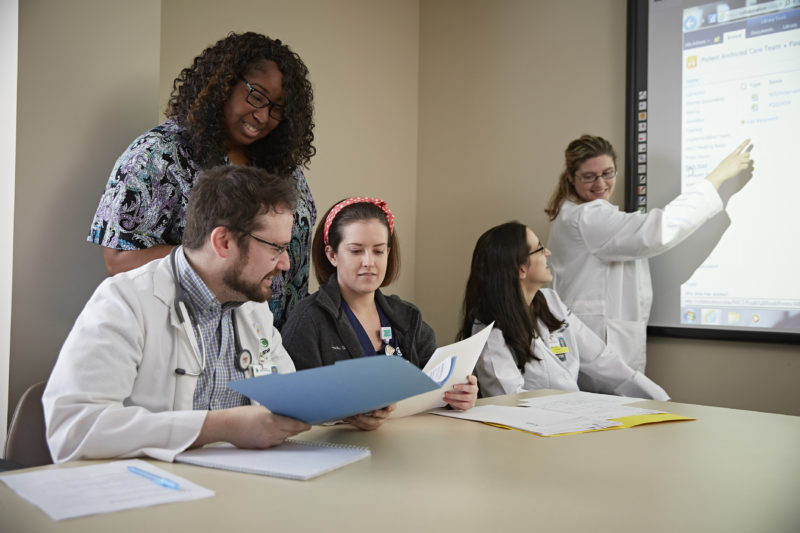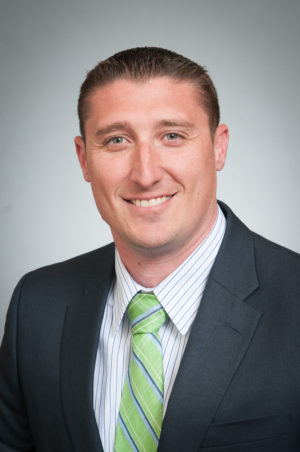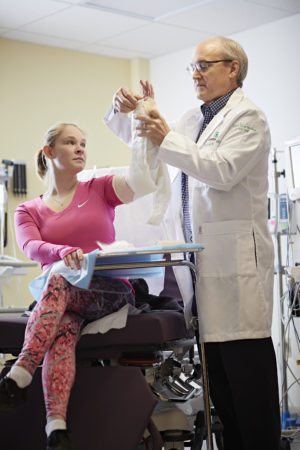To help patients achieve optimal health, Christiana Care Health System is employing a new personalized approach to primary care, using a model called Patient-Anchored Care Teams (PACT).
PACT provides each patient with a team to provide care based on a close familiarity with the patient. Each team includes a primary care physician, a registered nurse, two or more medical assistants and usually a nurse practitioner or resident physician.
The PACT initiative began with a simple goal: make primary care better.
“Our mandate was really that broad and that exciting,” said Sarah Schenck, M.D., clinical leader for Primary Care Transformation. “Now we have a powerful model that is truly what primary care should be.”
Christiana Care launched the new model last fall in four primary care practices: Foulk Road Family Medicine, Lancaster Pike Internal Medicine, Smyrna Family Medicine and Wilmington Adult Medicine. With a personalized care team that is very familiar with their needs, patients receive greater continuity of care, gain improved access to their primary physician and other caregivers, and can take advantage of a greater range of care settings, including office visits, group medical visits, telephone visits and patient portal interactions.

“PACT is reimagining and redesigning the way we deliver primary care in ways that benefit patients and the health care team,” said Fran Gott, administrative team leader for the project and director of primary care and community medicine. “PACT allows caregivers to practice at the top of their license and realigns some of the computer-focused tasks and tasks of clinical care to different members of the team.”

According to Gott, patients report benefiting from PACT with a care experience designed to be more positive, welcoming, convenient, and patient-focused.
Paul Wellborn, a patient advisor to the PACT initiative, agrees.
“I think this will really help make for a better patient experience,” Wellborn said. “It sets time aside for the whole team to go over patient care in detail, and it also frees up physicians from certain tasks to address more complex issues.”
Dr. Schenck noted the recent example of a physician at Smyrna Family Medicine who was able to devote her full attention to an elderly patient because of the staff support provided by the PACT model. During their conversation, the physician detected subtle symptoms that the patient herself hadn’t noticed. She quickly initiated testing, and a CT scan revealed that the patient had acute appendicitis. The physician said that she likely would have missed the symptoms if she had been distracted by the task of entering data into her computer during the visit with the patient.
Using communication and data technologies, the PACT model is changing patient outcomes. At the Wilmington Adult Medicine site, for example, the PACT team has focused on increasing the percentage of patients who follow through with getting mammograms. In just five months, they’ve seen that number rise from 55 percent to nearly 68 percent.
“That’s pretty fantastic,” Dr. Schenck said. “And in one of those cases the mammogram revealed an abnormality, and it was breast cancer. It would not have been detected that early otherwise.”
Dr. Schenck noted another dramatic example at the Foulk Road practice where a patient, being seen for an unrelated issue, exhibited signs of depression to the medical assistant. Because of the team’s new PACT workflow, the care team was able to immediately get the patient a behavioral health consultation and potentially avert a crisis. “It shows how profoundly workflow can affect patient care,” she said.
The PACT initiative, still in its early stages, is now developing a multi-pronged approach to assessing its success. This includes evaluating measures such as patient outcomes, care quality and safety, patient access and patient satisfaction. It also includes focus-group evaluations to learn more about changes in the clinical teams’ experience in the new model.
“What we hear from patients and caregivers will inform refinements to the model,” said Gott. “We want to continue these success stories about this new way of providing care to the people we serve.”



